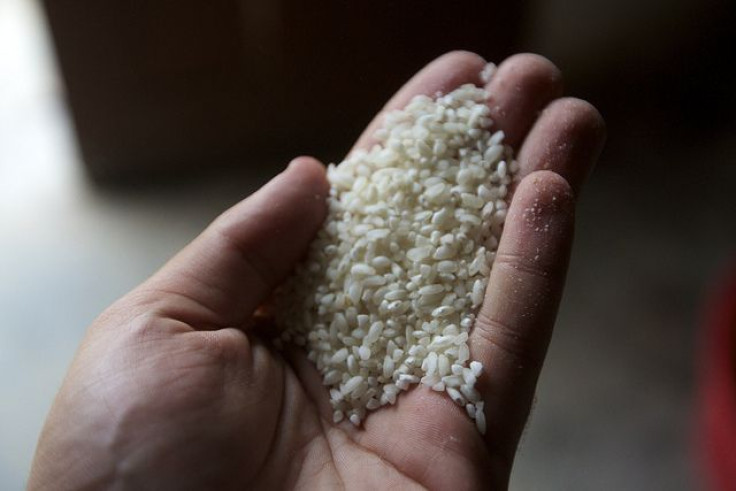Arsenic In Rice Detectable, But Too Low To Cause Immediate Negative Health Effects: FDA

The U.S. Food and Drug Administration (FDA) said Friday that, after testing 13,000 samples of popular rice products, most contained the human carcinogen arsenic. However, there is no cause for alarm because, although the arsenic is detectable, the levels are too low to cause immediate negative health effects.
"All of the data suggest levels that are not high enough to give us cause for concern for immediate or near-term effects," said FDA commissioner Margaret Hamburg.
According to Medical News Today, arsenic is a semi-metallic chemical that is found in groundwater. When ingested at dangerous levels, it can cause major health complications ranging from arsenic poisoning (“arsenicosis”) to death. Symptoms of arsenic poisoning include abdominal pain, diarrhea, dark urine, vertigo, and delirium.
In a statement, Deborah Willenberg, spokeswoman for the USA Rice Federation, said this of the FDA’s findings:
"FDA has provided American consumers with renewed assurances that there is no need to change a well-balanced diet that includes rice, which it notes is a life-long dietary staple for many people. Arsenic levels found in rice represent no immediate health concern. FDA has said in their most recent statement that arsenic levels in rice are too low to cause any immediate or short-term adverse health effects. There are no reported instances of illness nor are there any scientific studies that directly connect inorganic arsenic in food in general, nor rice specifically, to adverse human health effects.”
Friday’s announcement is part of an ongoing FDA investigation of arsenic. The agency continues to take steps to learn whether the levels of arsenic in certain food products pose a risk to public health. In the case of rice and rice products, the FDA does offer three suggestions:
What Should Consumers Do?
- Eat a well-balanced diet. All consumers, including pregnant women, infants, and children, are encouraged to eat a well-balanced diet for good nutrition and to minimize the negative health effects that could come from eating an excess of any one food.
- Vary your grains. Like rice, other grains — such as wheat, barley, and oats — are nutritious and can be used to help vary a consumer's diet.
- Consider alternatives for an infant's first solid food. Many infants are fed rice cereal as their first solid food. According to the American Academy of Pediatrics, there is no medical evidence that rice cereal has any advantage over other grains as a first solid food, and infants would likely benefit from eating a variety of grain cereals.



























